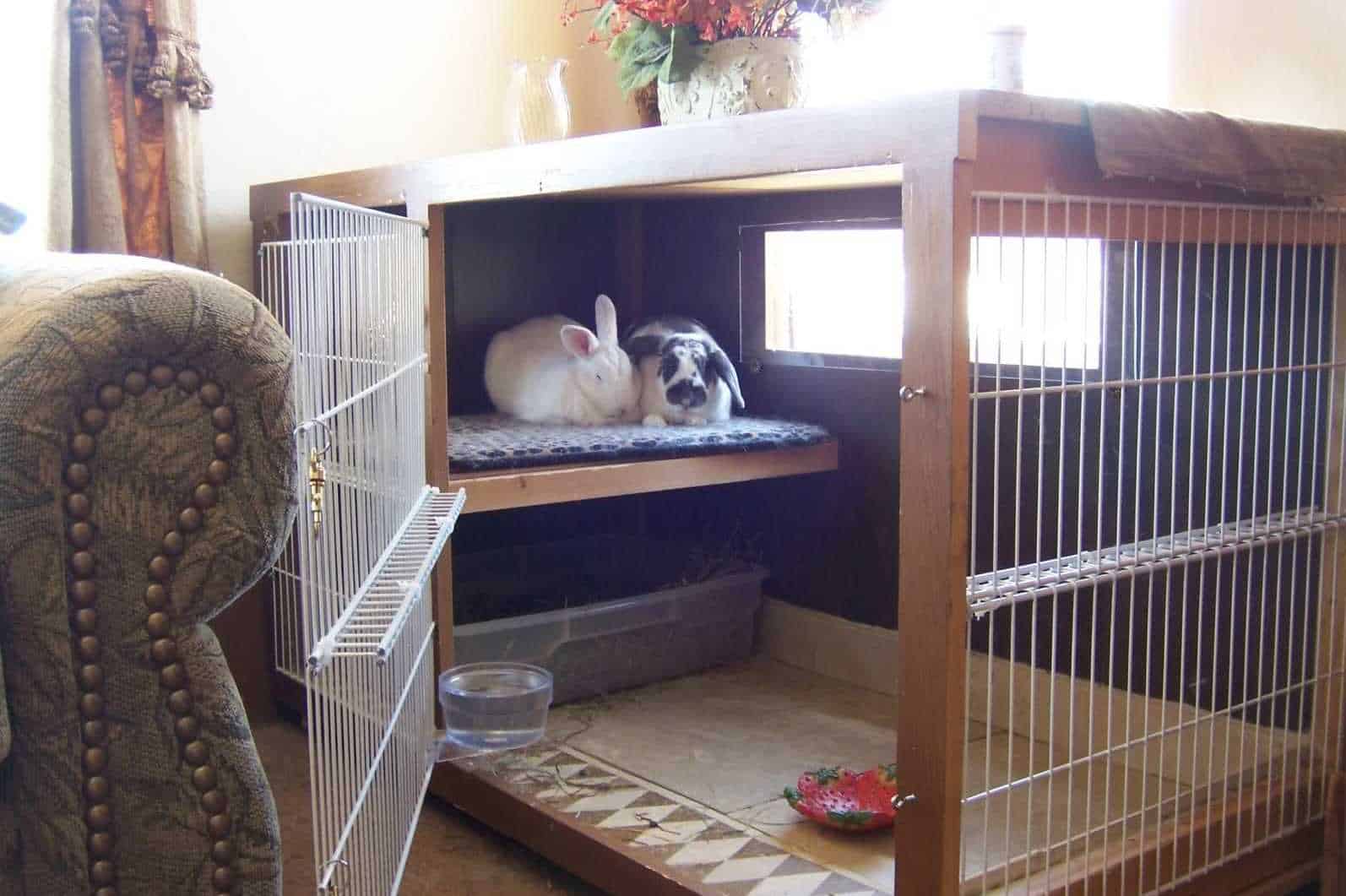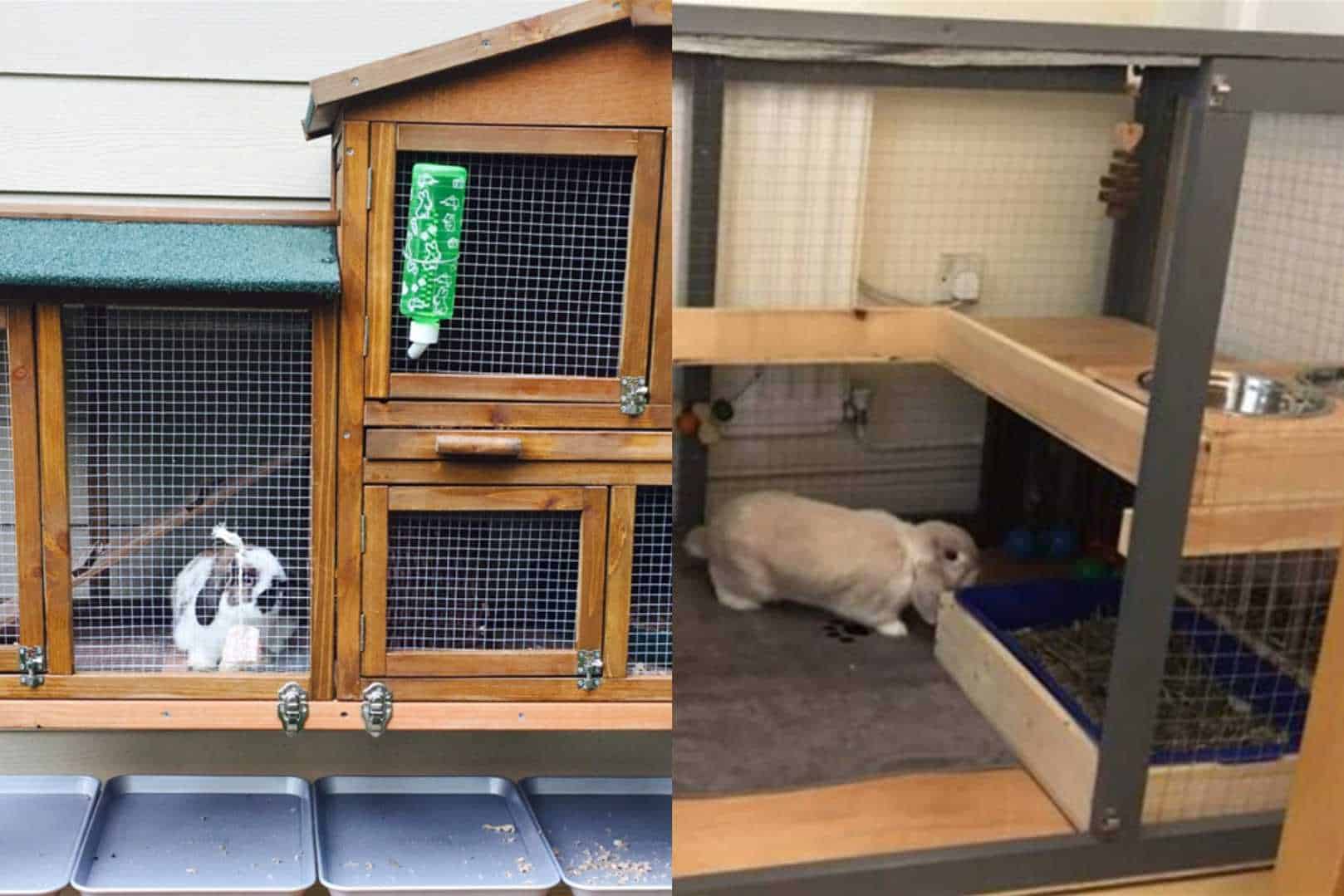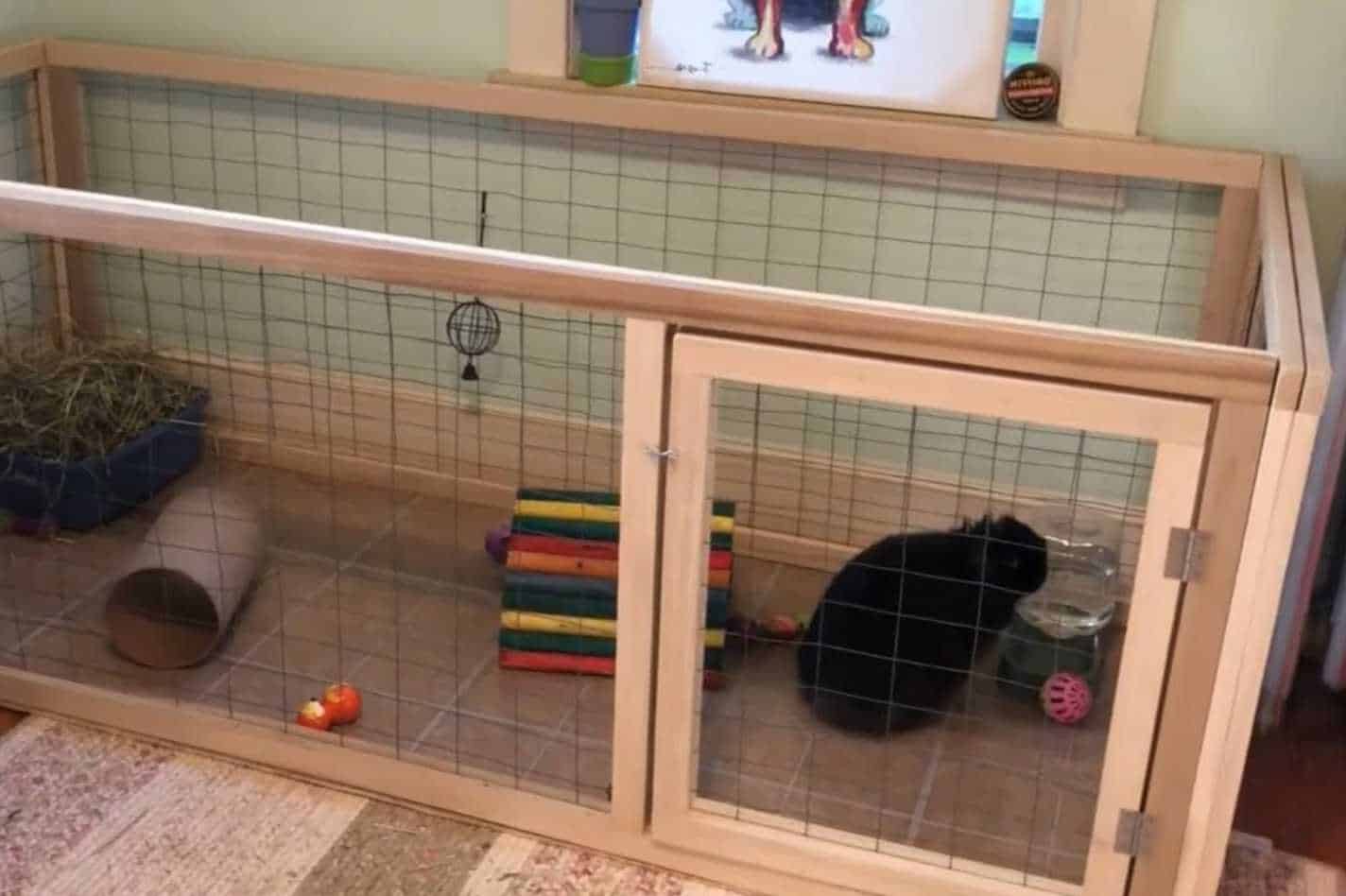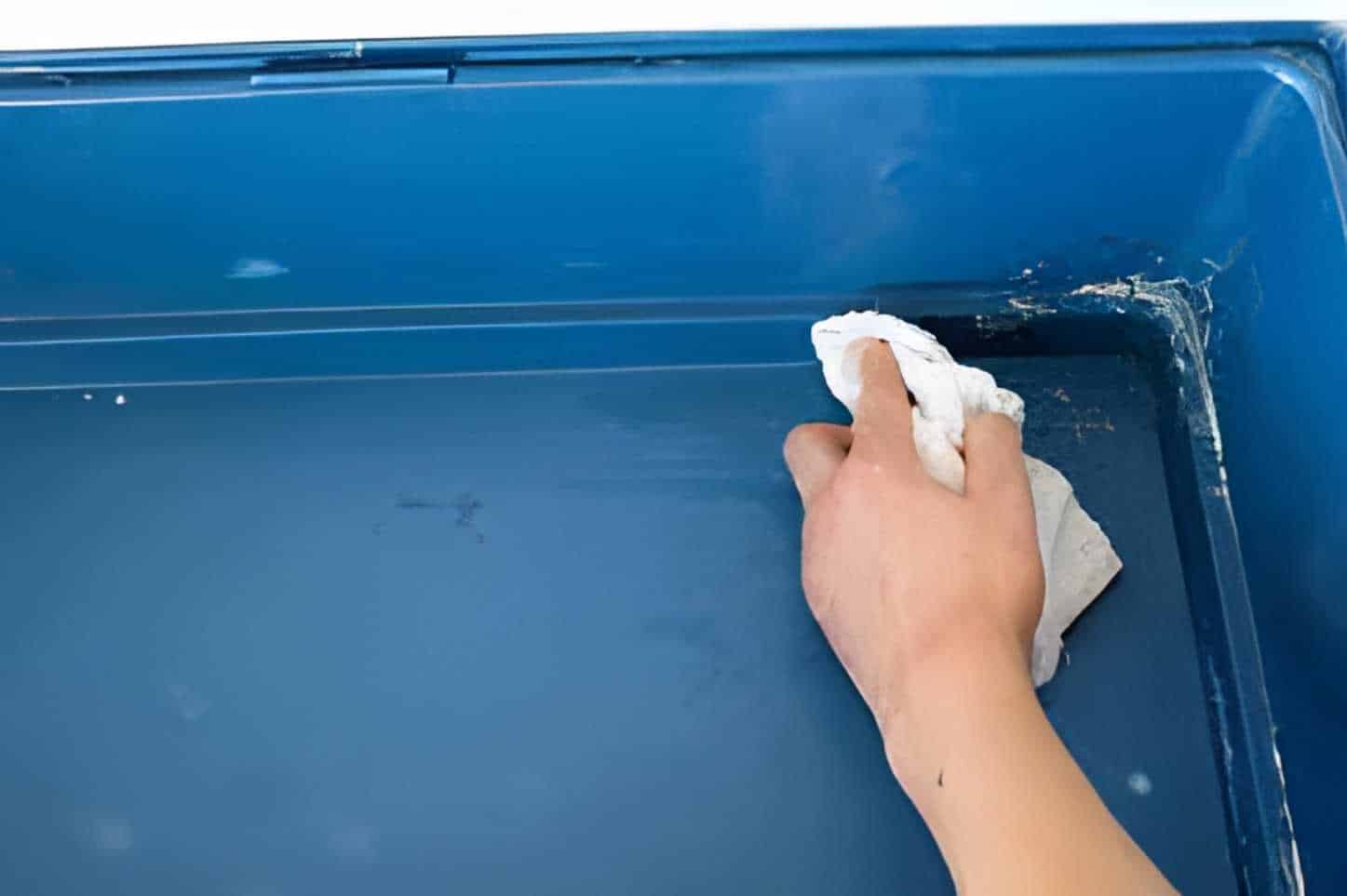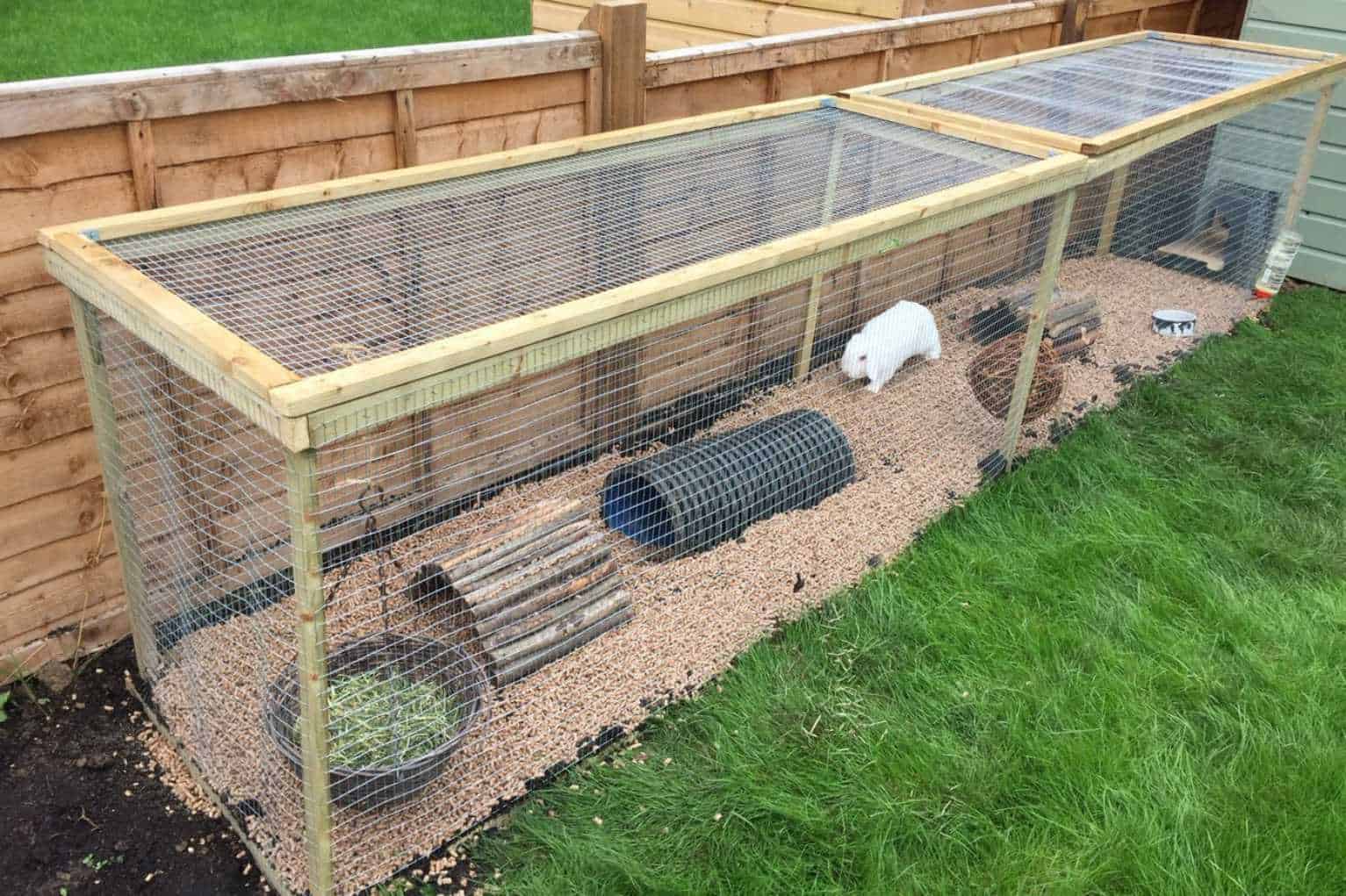Do you have a new rabbit at home? One of the first things you should prepare as a new bunny owner is your rabbit’s shelter.
If you’re planning on building an indoor rabbit cage but don’t know where to begin, don’t fret! Here’s everything you need to know about how to set up an indoor rabbit cage.
On this page, you’ll learn:
- Easy steps on how to set up an indoor rabbit cage
- The difference between a cage and a hutch
- The pros and cons of having indoor rabbits
Without further ado, let’s start with what having an indoor rabbit cage is like. Read along!
Having an Indoor Rabbit Cage
Keeping rabbits indoors has pros and cons for both rabbits and pet owners. Most owners choose indoor rabbit cages because they believe it is a safer and cheaper option. But is that the real deal?
Pros
Here are the advantages of having indoor rabbits:
- An indoor rabbit cage keeps your rabbit away from predators that can potentially bring harm to them. Having indoor rabbit cages also protects your pet from harsh weather conditions and extreme temperatures. Besides that, rabbits will be away from parasites if you keep them inside.
- You can easily play and bond with your rabbit if they are indoors. Rabbits are excellent companions, and they love human interaction.
- As a pet owner, it is essential to keep an eye on your rabbit all the time.
By having your pets indoors, you can easily monitor their health and condition every day. You can quickly spot any problems and subtle behavioral changes that can be a problem.
Cons
Having an indoor rabbit cage is not black and white. Like any other pet housing option, it has its disadvantages too.
Chewing
If there’s one thing rabbits can do for the rest of their lives, it’s to chew, chew, and chew! Rabbits love to chew and munch on anything they see. They are very curious animals, and sometimes, their destructive habits can reach extremes.
Most rabbits chew, dig, and burrow through couches, rugs, and furniture pieces. Destructive habits are a big problem for pet owners who have indoor rabbits.
Other animals
If you have other animals at home, they could be a danger to your rabbit. Some animals do not like being with others, as many dogs do. Dogs from hunting breeds are not used to having a prey animal around.
Cleanliness
You have to deal with your rabbit’s mess indoors on a daily basis. You’re likely to see piles of poop everywhere if your rabbit stays loose around your house.
While having an indoor rabbit cage is safe, cleanliness is among the disadvantages that pet owners are concerned about the most.
Rabbit Cage vs. Rabbit Hutch
Although similar, a rabbit cage and hutch are two different rabbit housings for your pet.
Cages are mainly used for temporary shelter as rabbits can not hide in these housings. Hutches, on the other hand, are enclosed housings. But most of the time, they are not suitable for indoor settings.
| Basis of Comparison | Rabbit Cage | Rabbit Hutch |
| Best Suited For | Indoors | Outdoors |
| Material Used | Wire mesh and plastic | Lumber and wire |
| Levels | Can have a single level or double levels | Can have a single level or double levels |
| Safety | Rabbits are not exposed to predators, and harsh weather conditions indoors | Protects bunnies from predators and extreme weather conditions |
Setting up an indoor rabbit cage
Here’s a step-by-step guide that will walk you through how to set up an indoor rabbit cage:
Step 1: Gather your materials
If you’re going to DIY, have a checklist of the necessary materials to set up an indoor rabbit cage.
You’ll need the following:
- An appropriate flooring
- 4-foot X-pen or Storage grids
- Cable ties
- Hay box
- Rabbit toys
- Water bottle
- Bottle holder
- Rabbit bed
- Fleece
- Sheets
Step 2: Prepare the flooring
Rabbits have sensitive hocks. Pick a type of flooring that would protect your rabbit’s feet from heavy pressures that cause sore hocks in rabbits.
The recommended flooring for an indoor rabbit cage is any soft flooring that’s free from abrasives. You can use a rollout foam mat topped with a cotton blanket or fleece for optimal comfort.
Memory foams are a great choice for flooring, too. You can place sheets on top to protect the mattresses and foam.
Step 3: Set up the hay box
We can’t stress how much rabbits need hay daily. Because a rabbit’s diet comprises mainly of hay, they need to have access to it 24/7. Make sure to include a hay box inside your rabbit’s cage.
Step 4: Wrap the cage with an x-pen or storage grids for DIY cages
Wrap a 4-foot x-pen or stacked storage grids around to secure the indoor rabbit cage. X-pens are easier to set up, as you can easily fold the corners according to your desired length.
If you are using storage grids, use cable ties to secure them. Rabbits can get really playful and might run against the grids, causing them to fall over. Prevent this by putting lots of cable ties to connect the grids.
Step 5: Place a water bottle and food bowl
Don’t forget to place your rabbit’s water bottle and food bowl. There are available bottle holders perfect for rabbit cages. You can find them at your local pet store or order online. Never miss out on this step! Your pet needs to stay hydrated 24/7.
Step 6: Add your rabbit’s favorite toy
Rabbits love getting your attention all the time. Other than that, they love playing with toys too! Ensure that your rabbits have company inside their cage by placing toys around. You can also set up ramps and shelves where your rabbit can hop and play.
Rabbit toys keep your pet active daily, as these small but terrible animals have lots of energy stored within them!
Step 7: Your rabbit is ready to enjoy the cage!
Congratulations! Job well done on setting up the indoor rabbit cage. Once you’ve checked if everything is in place, you can now let your rabbit occupy the cage.
Sometimes, rabbits won’t run around their new cage immediately. It may take some time before they do so, and that’s okay. Your rabbit will likely adjust to its new environment within a few hours.
Cleaning an Indoor Rabbit Cage
After you’re all done setting everything up, the next challenge is cleaning an indoor rabbit cage.
Below are tips to help you have a clean rabbit cage inside your home.
- Clean your rabbit cage at least twice a month. You might need to do this more often, depending on the size of the enclosure.
- Train your rabbit. Litter-training, your rabbit helps lessen the mess they make.
- Wash food bowls and water bottles regularly.
- Use spot cleaners to remove stains, water spills, and urine clumps.
- Change your rabbit’s bedding often.
Should you set up an outdoor rabbit cage too?
If you’re considering setting up an outdoor rabbit cage, here’s a breakdown. We’ve listed the pros and cons of having an outdoor rabbit cage to help you decide.
Pros
- Freedom: Rabbits are given the freedom to enjoy and stay active when they stay outdoors. They are free to roam around and breathe fresh air daily.
- No Allergies: People with an allergic reaction to animal fur like the idea of having outdoor rabbit cages instead of indoor ones.
- Natural life: Rabbits staying outdoors live a life inclined to nature. They can dig, tunnel, burrow, and chew without damaging your property. They also have constant airflow with no space constrictions instead of staying indoors. With plenty of room for digging, rabbits will indeed like being loose outdoors.
Cons
- Predators and Harsh Weather: Predators are the biggest threat to rabbits staying outdoors. Other than that, rabbits in outdoor cages are prone to experiencing harsh weather effects that can make them ill. Snow and rain can make your rabbit’s housing wet, which is not suitable for your rabbit’s well-being. Having a dry and safe cage for your rabbit is extremely important to keep them away from danger and sickness.
- No companion: Your rabbit will sometimes feel lonely outdoors, most especially breeds who love human interaction. Many rabbits enjoy social interaction and will seek your attention frequently. Hence, having no companions outdoors can make them sad. Understanding the pros and cons of indoor and outdoor rabbit housings can help you decipher which option suits your rabbit best.
Summary
We hope this article helped you on how to set up an indoor rabbit cage. The steps are pretty straightforward, and your rabbit can enjoy its new home in under an hour!
Don’t forget to refill your rabbit’s food bowls, hay boxes, and water bottles. It’s also essential to clean your rabbit’s house regularly to make them smell fresh all day!
